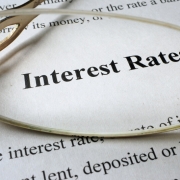What CRE Industry Insiders Are Thinking Might Happen In 2024
Commercial real estate professionals agreed in the Fall of 2022 that 2023 would have a healthy serving of uncertainty, with falling transaction volumes leading to a lack of price discovery and rising interest rates putting pressure on financing.
Still, people thought that by the second quarter of 2023, things would be getting back to normal. No one had a clue how long inflation would hang in, how high interest rates would go, and how much macroeconomic trouble there would be with banks being closed, many lenders pulling back, falling valuations, the ongoing impact of higher interest rates, major strikes by unions, political division, and more.
CRE pros are being much more careful and circumspect now.
As Jeff Klotz, founder and CEO of The Klotz Group of Companies, says, “The only certainty we’ve added is that it’s more uncertain.”
Welcome to the future. Here’s what industry insiders are thinking might happen this year in key areas.
PRICE DISCOVERY AND VALUATIONS
With all other problems, discovery of many types is maybe the biggest, because it holds important answers, if only that discovery gets to happen.
“For the next 12 months, the theme will be a discovery of the result of all the mistakes made over the last several years,” Klotz says. On the transaction level, he thinks that “the divide between buyer and seller is larger and wider today,” and “it hasn’t shrunk as we had expected at this time last year,” Klotz says. His company buys, sells, owns, operates, consults, borrows, lends, and develops with 12 different wholly owned subsidiaries.
Klotz gets excited over the potential for buying “some discounted and cheap real estate.” His big worry is his own portfolio.
“Let’s face it, I can’t control the market. I can’t control what it’s worth because the market does that.”
PRIVATE MARKETS HAVE YET TO PRICE IN CHANGES
Going hand-in-hand with a lack of price discovery is the opacity and potential over-valuation of private real estate values.
“The public REIT markets have already priced in the impact of higher debt caps and are trading at the 6% cap rate,” says Uma Moriarity, senior investment strategist and global ESG lead for CenterSquare. “For core private real estate funds, we look at the NCREIF ODCE Index. The valuation across those funds is still close to a 4.2% cap rate. If you don’t have transactions, you don’t have comps and you don’t have the right data feed appraisers need. In terms of the 4.2 cap rate, those ODCE funds are doing transactions in the 5% cap range. We think the public REITs are on the slightly cheap side of fair because the private market is still overpriced.”
According to research from CenterSquare Investment Management, REITs historically outperform private real estate and equities in the periods of time after rate hiking cycles end. If the Fed does stop the upward march of its rate hiking cycle, 2024 could see REIT outperformance.
INTEREST RATES
If there is any single number that is a meaningful metric for the industry, it’s the federal funds rate, the benchmark interest set by the Federal Reserve, with its enormous impact on financing costs.
“I think you could argue very convincingly that the 30-year bull run is over,” Nancy Lashine, managing partner of Park Madison Partners, says. “I don’t think I’m ever going to see a 2% Treasury rate again. I don’t think we’ll ever see a 3% or 4% mortgage rate again. You could argue there’s no good deal. There’s plenty of capital but no good deal.”
“I would say we’ve enjoyed cheap money for a very long time, but it’s led us to a lot of pricing perhaps that was reliant on that cheap financing,” says Tess Gruenstein, senior vice president, acquisitions and portfolio management, real estate at Bailard. “When it goes away, things shift. We’re back to a more normalized environment and people won’t do deals because they’re optimized for leverage.”
That means a lot of real estate — and not just office — is going to be underwater.
“We have a lot of groups coming to us because we raise private equity capital. The best thing anybody can say to us is we have no legacy assets,” says Lashine. “If you were in this business over the last 15 years and you heard someone say, ‘I sold everything in 2005, 2006, and 2007,’ not only is he a good operator, but he has good timing. That was the best story anyone could tell and you’re going to hear those stories again.”
LENDERS PULL BACK
“This is kind of a doom and gloom moment,” says Stephen Bittel, chairman and CEO of Terranova Corporation. “The real challenge is that, whether they admit it or not, most banks are pretty much out of the lending business. There are a handful that will continue to dip their toes in the water for best customers with good equity and balance sheets.”
Many banks are worried about depositors seeing some assets, whether long-term Treasuries and mortgage-backed securities, or CRE-backed loans, as suspect, as happened with bank closings in 2023. Depositors pulled their money. For the first time, bank deposits contracted, by 4.8%, in the first half of 2023. Banks are worried that CRE loan values could drop in the face of falling property valuations, cutting asset values and making it harder to cover further worried withdrawals.
“If the small and mid-sized banks stop lending, which they effectively have — they’re pushing deals with high rates — businesses will shrink and cause a recession,” Bittel adds. “Banks are nervous about the future because it’s uncertain.”
Adam Fishkind, a member of law firm Dykema Gossett, says his “loan origination practice has definitely fallen off a cliff” — not just with banks, but other sources. “When I do borrower representation, I don’t see a lot of CMBS deals coming through these days.
“A lot of that has been replaced by private equity lending” with “the overall loan transaction is more akin to hard money lending.” Rates are higher and generally include points on the front and back ends, with larger spreads, shorter terms, and higher interest rate floors.
“Our expectations is that we’re not going to see an early improvement in 2024,” says David Cocanougher, president of multifamily at Leon Multifamily, part of Leon Capital Group. “I think there’s a tendency to want to be optimistic, but the longer this continues, the more down to earth everybody becomes.”
OFFICE SPECIAL SERVICING AND DEFAULTS
Ongoing data from multiple sources have shown that defaults, workouts, and special servicing are all on the rise, especially for office.
“We’re seeing some large office product defaults in the CMBS special servicing stuff that I do,” says Fishkind. “A lot of these buildings, they have a couple of major tenants that have left. If you have an A property and a great location, you probably still have a pretty good asset. But if you have suburban office or older office, you might have trouble again. It’s one of those opportunities where people are probably reducing space and putting the money in their pocket because they’re nervous about the possible recession, or they’re reducing space and going to a better environment.”
DISTRESS
“There are more distressed situations and transactions happening because of the way projects were structured because of floating rate debt or even pressure from equity partners to get a faster exit,” Cocanougher says.
“A lot of people say things because they want to move the market,” Jason Aster, vice president at KBA Lease Services, says. “The truth of the matter is my business exclusively relies on tenants taking office, but other than highly liquid companies poised to take advantage of distress, I don’t see anyone jumping in to invest in office assets, or any commercial assets.”
GlobeSt.com has previously reported signs of a secret distress market — increased bank CRE charge-offs and higher levels of distressed CRE loans — largely being handled privately and that has not broken out into a fully obvious run on distressed properties.
“What you’re seeing in leases is a focus on how a landlord or owner could apportion reinvestment,” Cocanougher adds. “What you’re seeing in leases are ways for the landlord to take back space originally designed for tenants, but then” charge back the costs or possibly even the lost rents. “While super high quality, trophy office assets will be fully booked and retain their value, landlords will hand the keys of distressed assets back to the lenders at a greater frequency in 2024. This will be particularly prevalent in the older Class A and Class B office product in dense cities like NYC and San Francisco.”
Klotz refers to the current distressed market as “private” and “embarrassing.” No one wants to talk about it publicly because they don’t want to draw attention to having made a mistake and losing money. Or, on the other hand, they don’t want others to realize that they bought some distressed properties and got a good deal. And the data lags because these events are in real time.
But it’s also attractive. “If you’re a core buyer, you can look around and say, ‘Would I take a 7% interest rate on a core investment?’ I think so,” Gruenstein says. “If you have a long-term perspective and patient capital, it’s very easy to make a case that now is the time to be out in the market, picking up some of these great pieces of real estate.”
Many with capital in their back pockets may still be waiting, though.
“I think there’s possibly a lot of equity being kept out,” says Tere Blanca, chairman and CEO of Blanca Commercial Real Estate. “It’s eroding if you had any, with values being hit as much as they have been. You wake up to higher interest rates and to much higher costs of operating your property and values are getting impacted. It’s a difficult time to navigate.”
“We’re still being patient, for sure, especially when it comes to investing in hard assets,” says Matt Windisch, executive vice president at Kennedy Wilson, which bought PacWest’s CRE loan portfolio for $2.4 billion back in June. “We continue to think that the construction lending space is extremely interesting. We have committed capital partners to fund an expansion.”
CONSUMERS PULL BACK
While consumer spending has appeared to continue strongly, it may not be all it seems. When the Census Bureau reports on consumer spending, it doesn’t take price differences into account. In other words, these are nominal and not real changes in spending behavior. To top it, the changes in spending are to only a 90% confidence interval that generally includes zero, so there is no way to tell if there’s been an actual change.
“I think part of why the pickup in transaction volumes didn’t happen this year is the Fed kept raising rates,” says Moriarty.
The translation from monetary strategy to the rest of the economy isn’t working as it has in the past.
Moriarty says she’s seen a rolling recession across the economy, but that it hasn’t hit the consumer. “That lasted a lot longer than any of us anticipated,” she says. “If you listen to what we saw from a lot of the consumer-oriented earnings this past earnings season, listening to what the hospitality REITs were telling you or the apartment REITs were telling you, you were seeing a pullback from the consumers.”
Credit card debt is at an all-time high and credit card and auto loan delinquencies are on the rise.
“The other new big thing to watch relates to student debt payments coming back online,” she adds “It seems difficult with the lack of credit availability overall to see that level of tightening without an impact.”
Consumers had built-up liquidity from Covid, but estimates, including from the Federal Reserve Bank of San Francisco, suggest that is likely gone. Not what you want to see when you’re hoping to avoid a recession, but consumer spending is 68% of GDP.
Source: GlobeSt.











